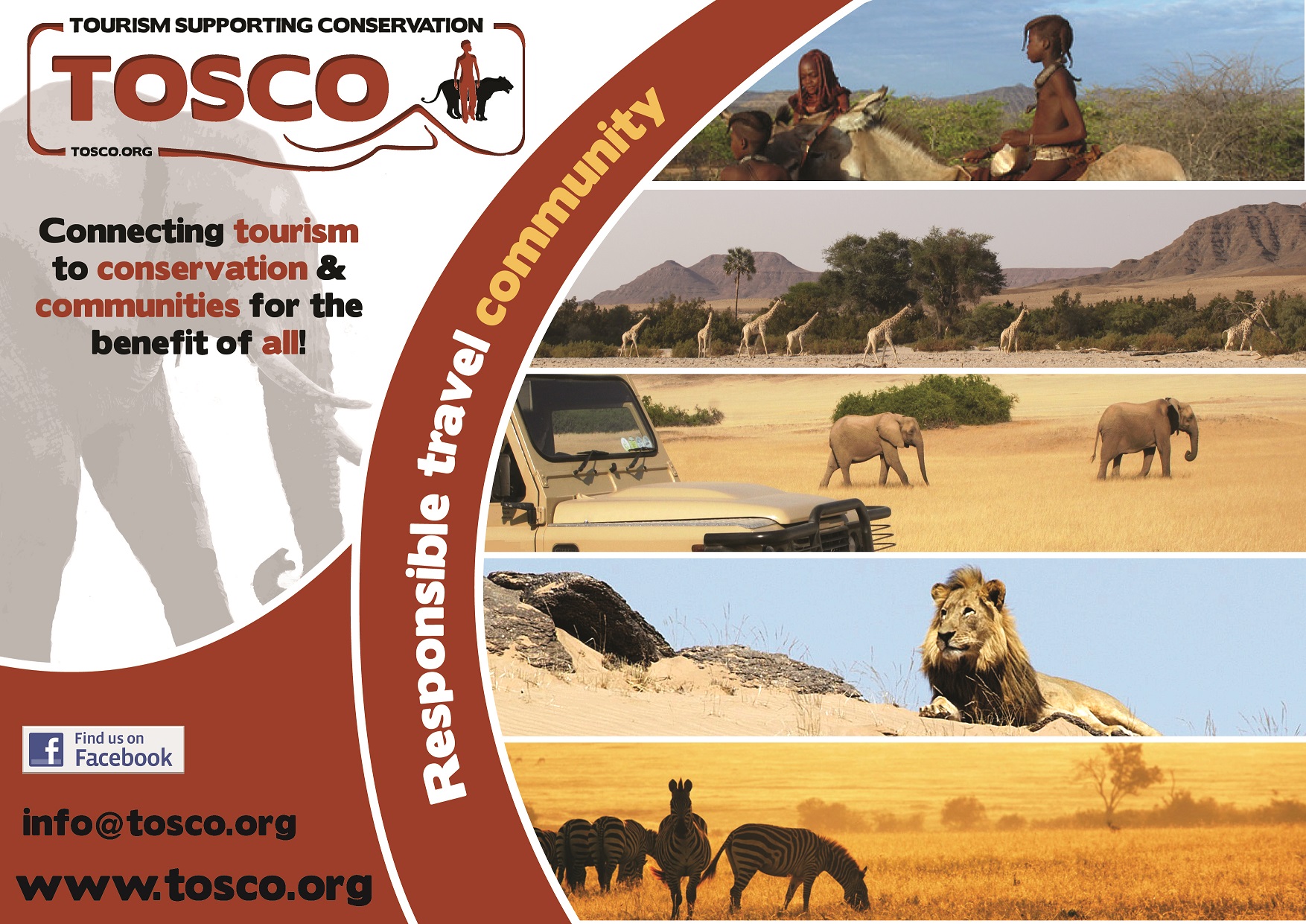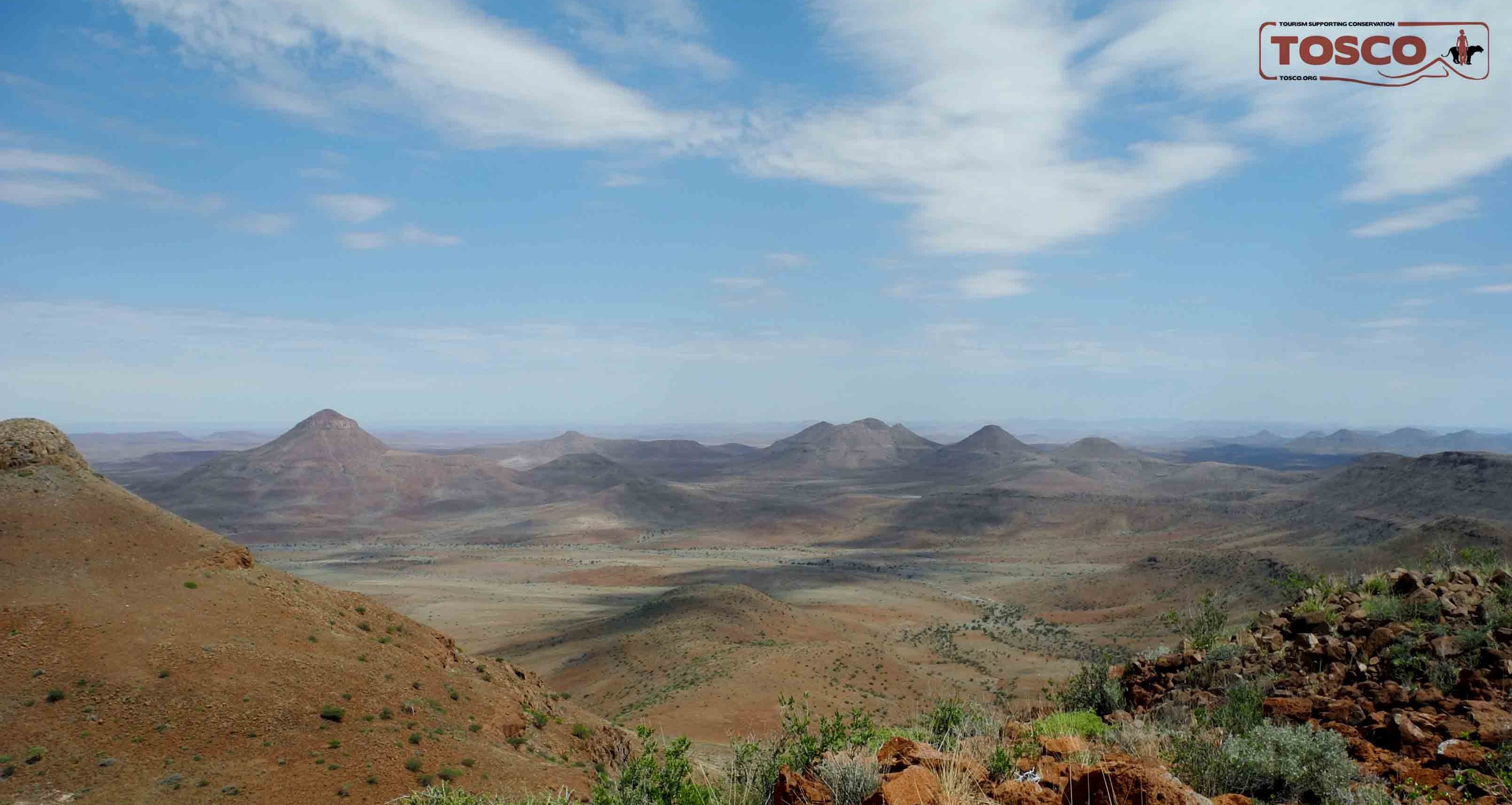 TOSCO Trust has this week released its yearly activity report: In its three years of existence TOSCO Trust has contributed 514 773 N$ to conservation, almost 250 000 N$ thereof in 2014/2015. 97% of TOSCO Trust’s income is dedicated to conservation, only ca 3% is needed for administration as the trust is managed by volunteers.
TOSCO Trust has this week released its yearly activity report: In its three years of existence TOSCO Trust has contributed 514 773 N$ to conservation, almost 250 000 N$ thereof in 2014/2015. 97% of TOSCO Trust’s income is dedicated to conservation, only ca 3% is needed for administration as the trust is managed by volunteers.
In June 2012 a whole pride of lions was poisoned in the Hoarusib area in Namibia’s north-western Kunene region. Shortly after, several tourism operators founded TOSCO (Tourism Supporting Conservation) Trust to fundraise in the tourism industry with a threefold intention: to financially support conservation projects, to assist local communities in living with the lions and to raise awareness. TOSCO Trust has since then evolved into an organisation that finances a broad range of conservation projects and promotes responsible travel in Namibia’s conservancies.
Why do lions get shot or poisoned? Because they get in conflict with people with whom they share their territory. Having lions roam the area where you live in a hut with your family would be scary enough for many of us. But the actual problem is that a cow or a donkey can be an irresistibly easy meal for lions – especially in times of drought, when game is sparse and the lions’ stomach empty. This, of course, earns them no love from farmers whose only way to make a living is their livestock.
On communal land, Namibia’s world-renowned conservancy programme has eased this hostility in the past 20 years. You can even hear some local people speaking fondly of “their” lions. Local communities, organized in conservancies, can earn an income from their wildlife, including the lions. Part of this income comes from hunting, another part from tourism. It is not as easy as it sounds, though. Conservancies have received criticism lately. Management of conservancies is complex and not everybody benefits in the same way. There are conservancies where tourism is not viable or where the benefits do not balance the costs of living with lions. The lions, however, they do not stick to an area where there are many paying tourists who want to see them.

TOSCO Trust intends to reduce this gap. TOSCO has for example paid for a cattle kraal (livestock enclosure) close to De Riet to reduce livestock losses from the frequent lion attacks. TOSCO is also paying the salary of a lion officer in Purros, whose task it is to monitor the lions, serve as an ambassador for the lions in the community and to try and deter the lions when needed. TOSCO has paid for three lion GPS collars in the value of more than 110.000 N$ that allow to determine the position of the lions for such purposes.
Lions are only one example, conflicts with elephants or hyenas are just as frequent and for the protection of rhinos or giraffe money is needed as well. TOSCO Trust has, for example, supported the rhino ranger programme with 81 126 N$ in 2014/15, has provided solar panels for the base of the Kwando Carnivore Project, has supported the research of the Desert Elephant Conservation Project and has now also entered into a partnership with the Giraffe Conservation Foundation.
In essence, TOSCO Trust is about responsible tourism on communal land. The International Centre for Responsible Tourism defines responsible tourism as tourism that creates “better places to live in, better places to visit”. If tourism can contribute to improving the lives of local people, then there is hope that tourists in Namibia will now and in the future, be able to experience something that is truly unique and almost lost elsewhere: humans and wildlife sharing areas of wild and spectacular beauty.
You can find TOSCO’s activity report 2014/2015 here.
Thank you very much to all our sponsors and everybody who is supporting TOSCO! We care for Namibia’s wild places.
Yours in conservation for the benefit of all!


